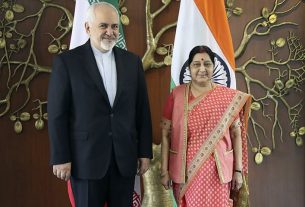ISLAMABAD: Despite Pakistan’s high current account deficit (CAD), it has remained below those of regional countries, however its volatility is higher than most states, says a report of United Nations Development Programme (UNDP) published on Wednesday.
In its analysis on the development priorities of the country in ‘Development Advocate Pakistan’ , UNDP says that Pakistan’s current account deficit despite being higher than the regional average is still lower than that of Egypt (-3.7 per cent), Morocco (-5.4pc), Sri Lanka (-3.9pc) and Turkey (-4.8pc) while its volatility (2.5pc) is higher than majority, the report says.
Analysing the factors behind high volatility, one issue particularly stands out — Pakistan has consistently held lower foreign exchange reserves than its peers. On average, dollar stocks have been at 5.4pc of GDP, which is lower than all countries, except Egypt.
While the regional average is 19pc, some states like Malaysia have reserves amounting to even 34pc of GDP. Low reserves make Pakistan’s economy vulnerable to fluctuations in current account, observes the analysis.
Within the current account, trade of goods led the deficit at 7pc of GDP — though higher than the regional average — but was still lower than most countries such as India, Morocco, Sri Lanka and Tunisia. However, majority of these states have been able to compensate for that through a surplus in trade in services, as opposed to Pakistan.
The report uses the case study of India, which has been able to generate a surplus in services sector through its IT and tourism industry. Pakistan, too, has the potential to generate more revenue from services, especially tourism.
Despite high potential, the number of foreign tourists coming to the country is still very low. An encouraging trend has been noted in recent years owing to improvement in law and order, but it can be further increased through policies that promote tourism industry, local destinations, history and culture and allow for expansion in businesses associated with the concerned industry.
It also stresses the need for investment in more tourist attractions. The World Travel and Tourism Council has estimated Pakistan’s total contribution from tourism to GDP at $8.8bn as against India’s $91.3bn which leaves significant potential to tap on for revenues, generating employment opportunities and plug the current account deficit, the report says.
Referring to the World Bank report on ‘Ease of Doing Business’, UNDP says Pakistan loses upon its potential to increase trade and investment through a plethora of regulatory bottlenecks that raise the overall cost of doing business for private investors.
It adds that the country’s regulatory environment creates hurdles in vital areas associated with setting up and managing the daily operations of a business entity, such as obtaining construction permits, getting electricity, obtaining credit, registering property, trading across borders and even paying taxes.
Inclusive growth is considered a key determinant for reducing poverty and deprivations. The country’s increasing youth population, if provided with adequate skills and capacities, will not only drive growth but their participation will also make it more inclusive.
Similarly, encouraging women participation will also bring economic and social benefits and support the country in optimising use of human resource base. Pakistan is losing a huge opportunity to accelerate economic growth owing to the exclusion of women from the labour market, the report says.



